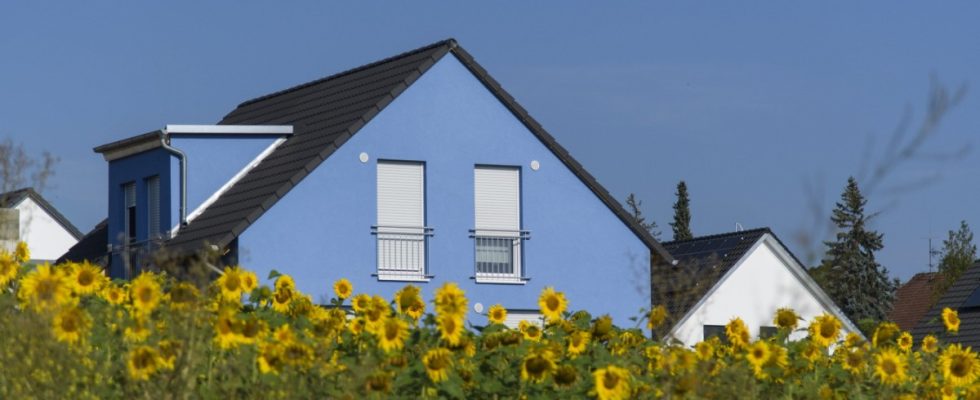Many would like to own their own apartment or house – but only very few can finance it. The federal government has therefore now launched a new funding program. This is intended to specifically support young families with low and middle incomes, said Federal Building Minister Klara Geywitz (SPD) on Wednesday in Berlin. However, the criteria for the funding are quite tricky – because the minister wants to use the program to boost new construction and at the same time enforce the highest climate protection standards. Does this calculation add up? The most important questions and answers about the new funding program.
Who is the funding aimed at?
The target group for the “Home Ownership for Families” (WEF) program are young families with at least one child whose taxable household income is a maximum of 60,000 euros. For each additional child, the earnings limit increases by 10,000 euros. Important: Only families that have at least one child who is under the age of 18 at the time the application is submitted are eligible for funding. At the other end of the age spectrum, support is only possible once the child has already been born. If you are pregnant, you have to wait.
What can you finance with it?
Only properties that are built or purchased for owner-occupation are eligible for funding – and a maximum of one residential unit. Applicants must not yet own real estate. In addition, very strict climate protection criteria apply: Only residential buildings that meet the energy standard of an efficiency house 40 for new buildings and the quality seal “Sustainable Building PLUS” (QNG-PLUS), which refers to the greenhouse gas emissions over the life cycle of a building, are eligible for funding. This also means that if you don’t build yourself, but buy, you can only get the subsidy for new buildings in their first occupancy – a maximum of twelve months after the building inspection.
What exactly does the grant consist of?
Exclusively from low-interest loans provided by KfW. There are no grants. The loans include sums of 140,000 to 240,000 euros. An interest rate of 1.25 percent is estimated for this, for a loan term of 35 years and a fixed interest rate of ten years. With a ten-year term, around 3.5 percent would currently be customary in the market. The maximum loan amount depends on the number of children and the exact environmental standard that the property achieves.
Is there additional building child benefit?
No. The Baukindergeld expired at the end of 2022. Until then, families could apply for 1,200 euros per child per year in support as long as they lived in a condominium or a condominium – for a maximum of ten years. The new WEF program is, so to speak, the successor regulation. However, there are now no more grants, only the preferential loans. In addition, the income limits for child benefit were much more generous.
How high is the funding volume?
A total of 350 million euros is available for the new programme. For comparison: the child benefit was budgeted at ten billion euros. However, the funding criteria at the WEF in terms of income and climate protection standards are so strict that only a few families are likely to be eligible for the program.
What do you have to pay attention to when applying?
If you build yourself and want to apply for a cheap loan, you have to work with energy efficiency experts. They check and confirm compliance with the requirements. The loan is then applied for before the start of construction at a bank, savings bank, building society or a financial intermediary.
Is there any criticism of the program?
However. Above all, many find the income limit too low. Building or buying a home on a comparatively low income at current prices seems utopian in many regions of Germany, despite low-interest loans. In many cases, this would only be possible if the applicants are relatively wealthy at the same time, for example through an inheritance. Confronted with the criticism, the Federal Building Minister argues that the income limit was based on the average earnings of those people who had applied for child benefit in previous years. This was less than 60,000 euros a year. The Central Association of the Construction Industry is still angry: The purchase prices for a property eligible for subsidies are simply too high, no one can afford that, they say.

